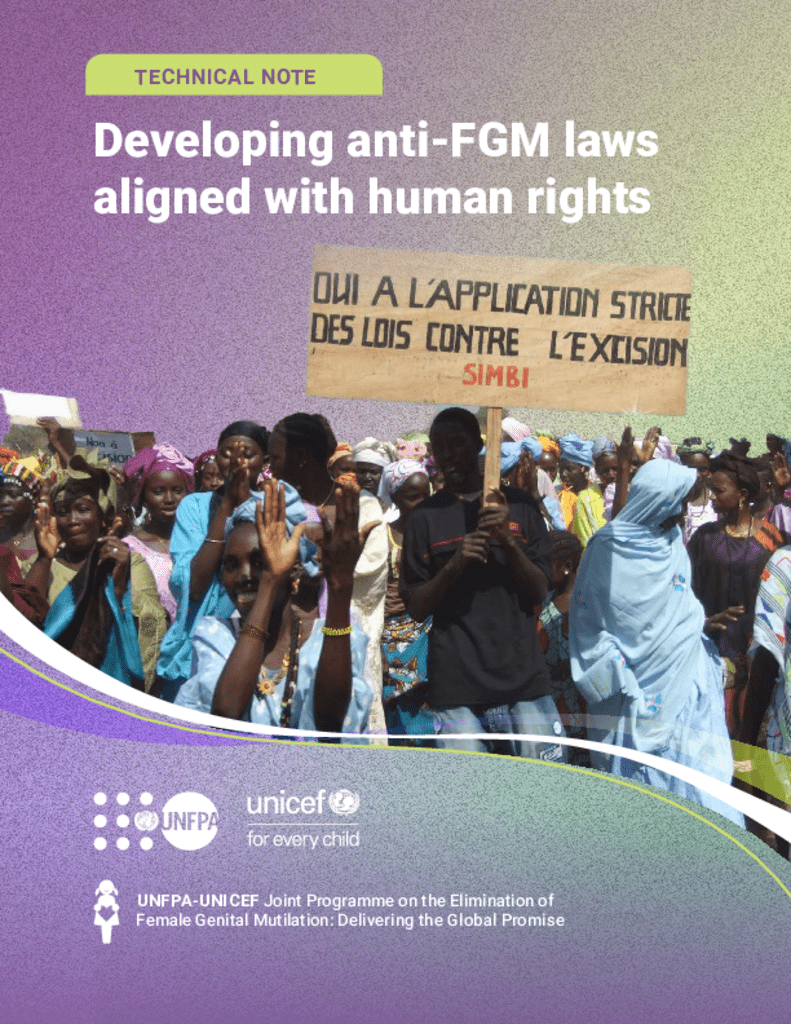This technical note supports policymakers, parliamentarians, and civil society actors in developing and/or amending laws to stop female genital mutilation (FGM). Little research or guidance exists on what makes a “good” anti-FGM law – in other words, the elements it should contain, particularly from a human rights perspective. This note offers guidance on good practices. It describes how to ground an anti-FGM law in standards defined by human rights conventions and mechanisms as well as political declarations made by States. The note could serve as a reference for countries developing new legislation criminalizing FGM or with plans to revise existing legislation. It does not discuss the enforcement of legislation, although it emphasizes that sufficient finance is critical to translate laws into practice and uphold human rights.





